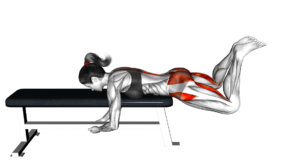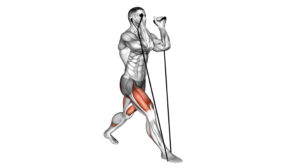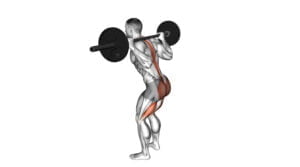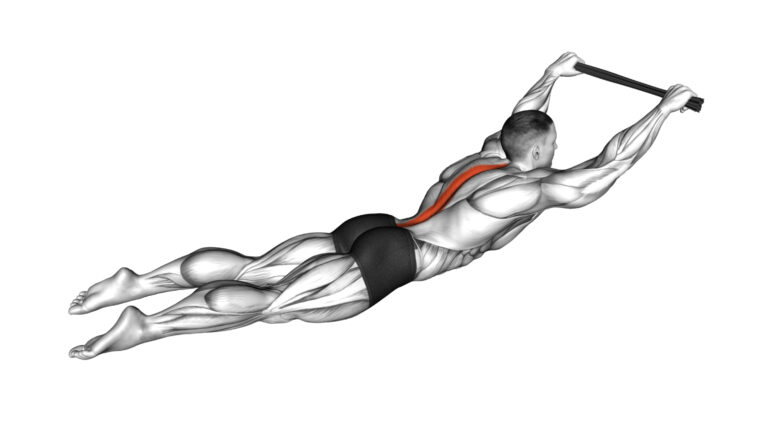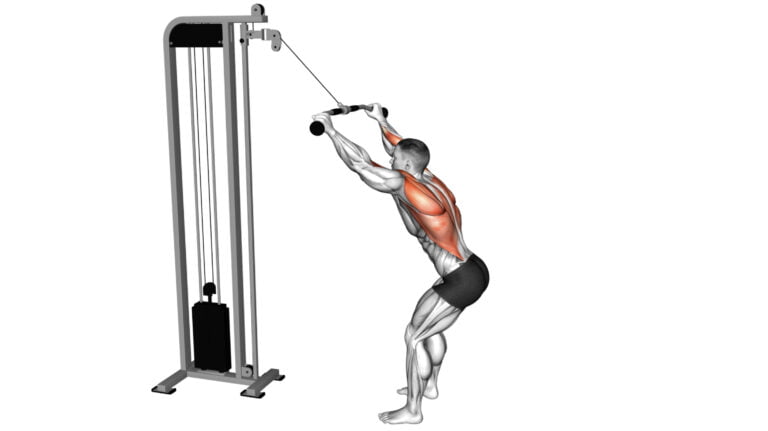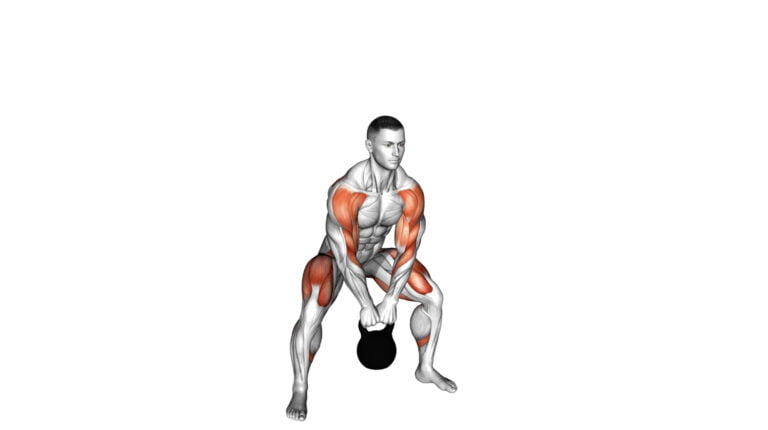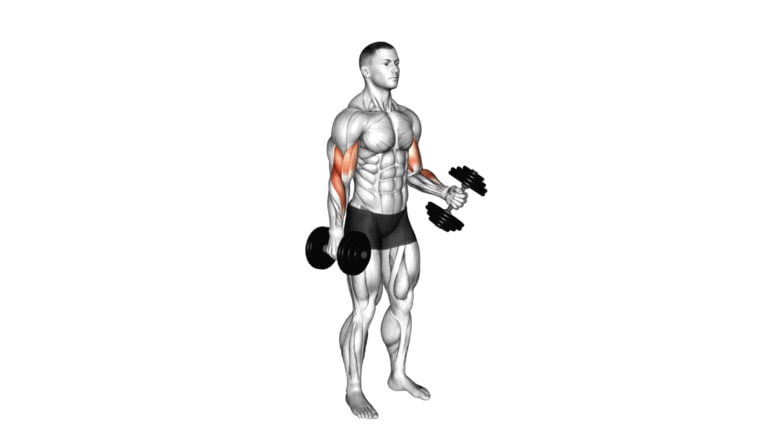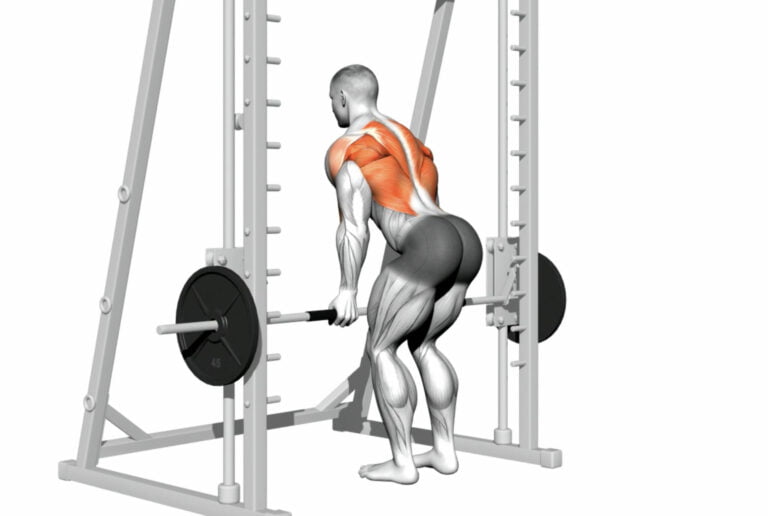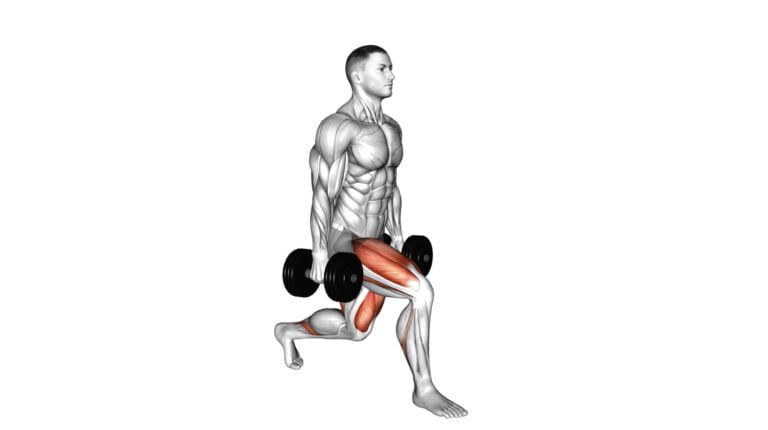10 Glute Exercises Weighted To Strengthen And Tone Your Glutes
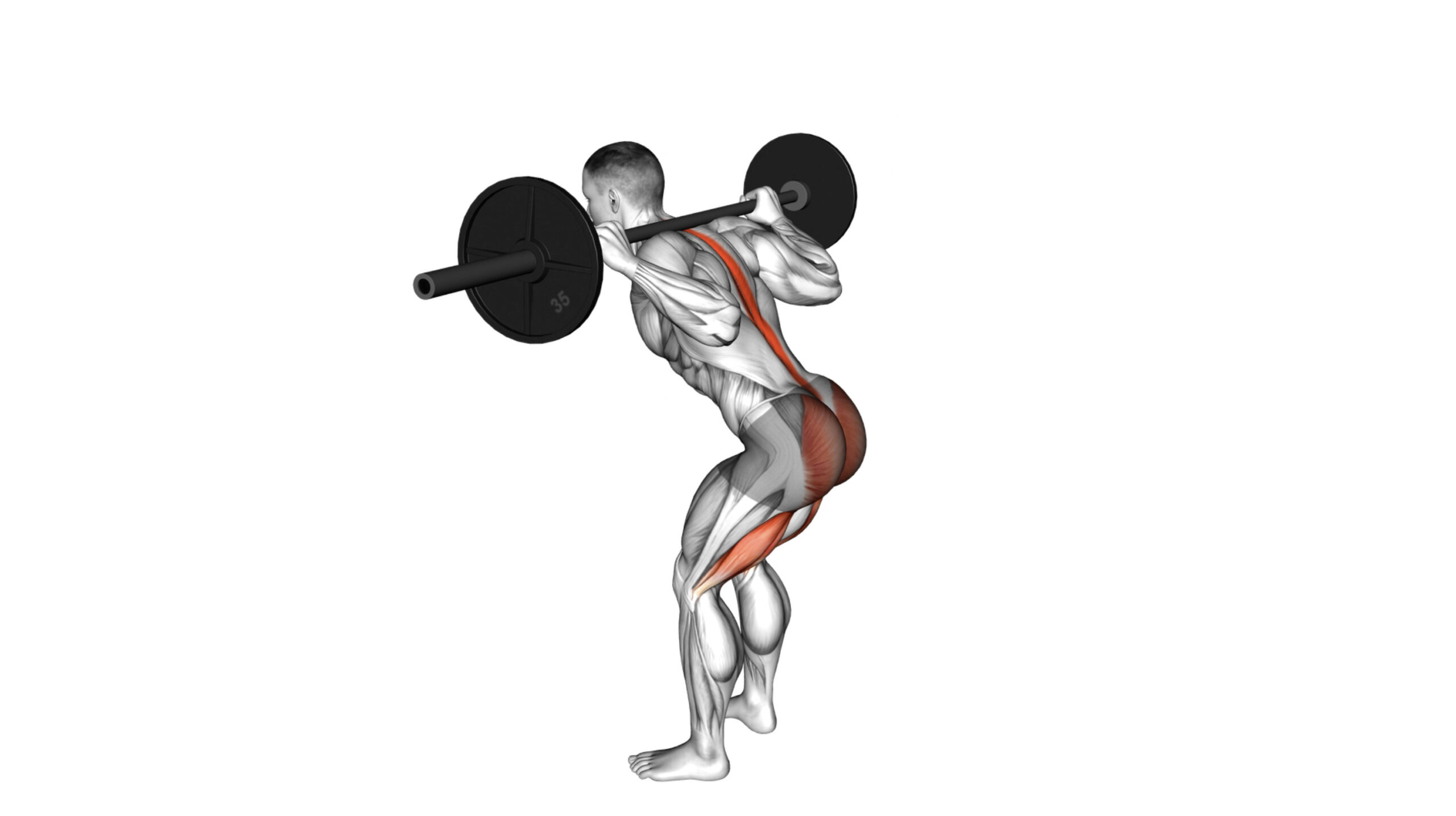
If you’ve ever thought that building strong, toned glutes was just about looking good in jeans, think again. With years of experience as a fitness coach, I’ve seen firsthand the transformational power of targeted glute training – not just for aesthetics but for overall strength and health.
Glute exercises weighted specifically ramp up the intensity and effectiveness of your workout, leading to better results.
The truth is, your glutes are the powerhouse of your body. They’re crucial for everything from standing up to sprinting at full speed. This article dives into 10 essential weighted exercises designed to strengthen and tone these vital muscles like never before.
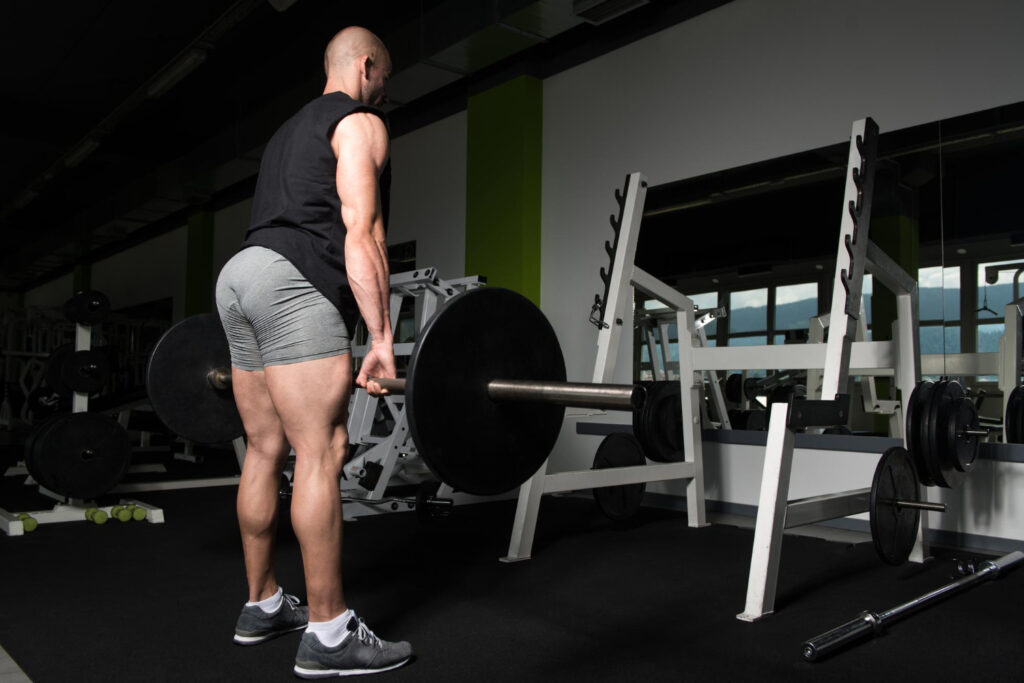
Ready? Let’s get started!
Key Takeaways
- Doing weighted glute exercises makes your butt muscles strong and good-looking. These workouts help with sports, keeping away injuries, and lifting heavier weights.
- Important moves for the glutes include the Barbell Glute Bridge, Hip Thrusts, and Kettlebell Deadlifts. Each one works different parts of your butt for better strength and shape.
- Always warm up before working out to avoid hurting yourself. Changing up exercises and how heavy they are keeps your training exciting and effective.
- Focusing on doing each exercise right helps work the correct muscles and stops injury. As you get better, lift more weight to keep growing muscle.
- Using a mix of these 10 key exercises can make your backside stronger than ever. It’s all about staying regular with workouts and pushing yourself safely to see big changes.
Benefits of Training the Glutes
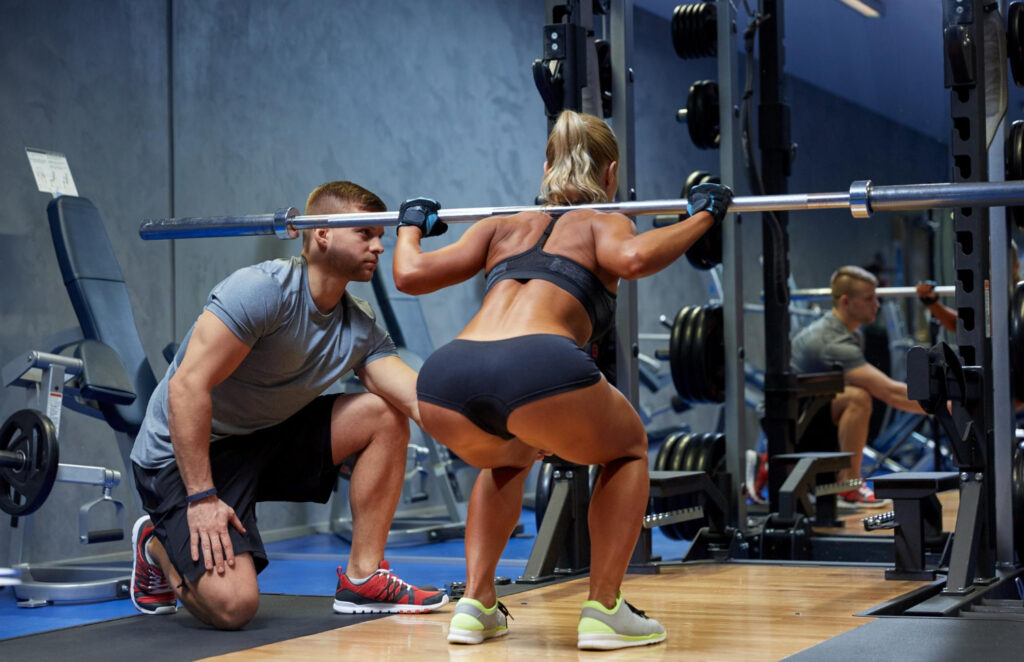
Training your glutes brings big wins for your body. Strong glutes make you better in sports and keep injuries away.
Stronger, toned glutes
Strong glutes are more than just about looking good. They play a big role in boosting your strength for lifting heavy weights and doing complex moves. If you’re aiming to lift more, work on those squats and deadlifts, your butt muscles matter a lot.
Training them well means you can handle bigger barbells and kettlebells with ease. Plus, it helps keep injuries away by supporting your lower back during tough workouts.
Working out your gluteus maximus, medius, and minimus turns up the power in your legs for better performance—whether that’s running faster or jumping higher. It’s like giving yourself an upgrade for every physical challenge you face.
So hit those weighted exercises hard; they build muscle mass in the right places to make sure every push, pull, and squat feels smoother and stronger.
Improved athletic performance
Training your glutes boosts athletic performance. Strong glutes are key for speed, power, and better jumps. They aid in quick direction changes – think about dodging opponents or making sharp turns during a race.
Plus, they help lift heavier weights by giving solid support to your hips and lower back.
Working on your glutes means fewer injuries too. It balances muscle strength around your pelvis and legs. This is critical for bodybuilders who squat, deadlift, and do compound exercises.
Stronger glutes also mean a stable core which keeps you safe during intense workouts or competitions.
Reduced risk of injury
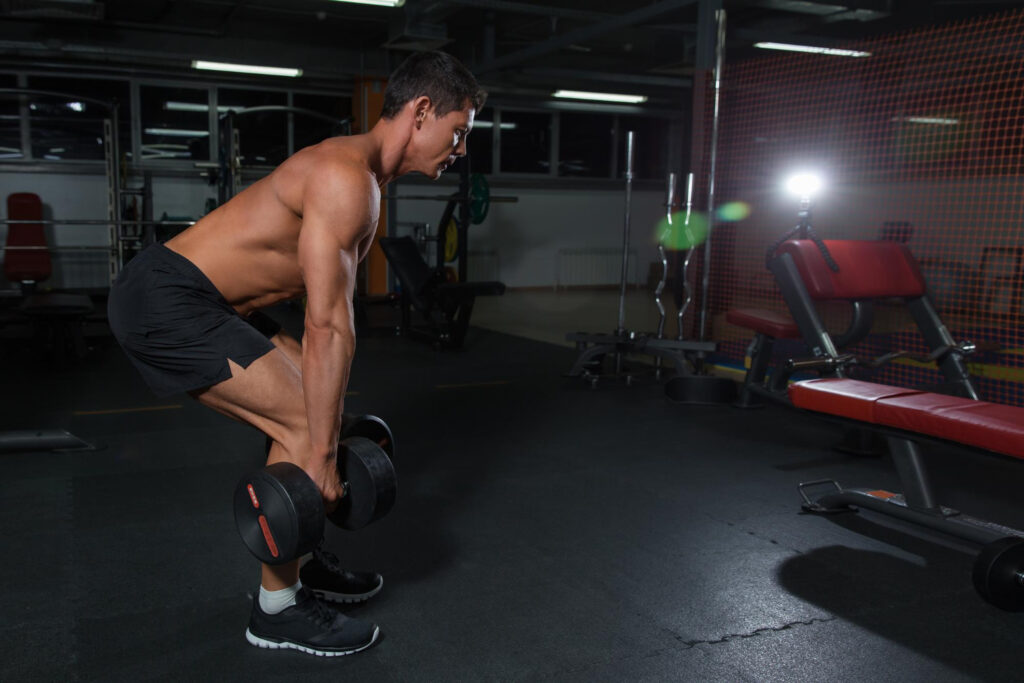
Strong glutes support hip muscles during heavy lifting, like squats and deadlifts. This means less chance of hurting your back or knees. Also, firm gluteal muscles help keep the body stable.
So, you’re less likely to fall or twist something while moving weights around.
Having strong buttocks makes sure other parts do their job right too. It helps avoid small injuries that can stop you from lifting as much weight. Plus, a solid base lets you push harder with lower risks.
Top 10 Glute Exercises Weighted
Getting your glutes in shape takes work, but with the right exercises, you’ll see progress. Glute Exercises Weighted give that extra push to tone and strengthen.
1. Barbell Glute Bridge (hands on bar)
The Barbell Glute Bridge with hands on the bar is a top move for working your glutes. You lie on your back, place a weighted barbell over your hips, and hold it with both hands to keep it steady.
Pushing through your heels, you lift your hips up, squeezing your glutes tight at the top before lowering down again. This exercise hits not just the glute muscles but also engages your hamstrings and core stability.
It’s perfect for adding strength to your lower body.
With each lift, focus on keeping a solid form—brace those abs and make sure not to arch the back too much. As you progress, gradually increase the weight to challenge yourself further.
Not only does this boost glute power but also aids in overall posterior strength training. Remember, consistency brings results—mix these into routines that target both squatting and deadlifting variations for balanced development.
2. Barbell Good Morning
After mastering the Barbell Glute Bridge, it’s time to step up with the Barbell Good Morning. This exercise targets your lower back, hamstrings, and glutes. You start by standing, feet shoulder-width apart.
Place the barbell on your shoulders, behind your head. Bend forward at your hips, keeping your back straight until you’re parallel to the floor. Then, rise back up to standing position.
This move is great for strengthening and adding mass to your lower body muscles. It demands focus on form and technique—keeping a flat back and bending only at the hips are key points to remember.
Since it works multiple muscle groups at once, including those in your core, it’s a solid pick for any weightlifting routine aiming for a stronger backside and improved posture.
3. Barbell Hip Thrust
The Barbell Hip Thrust is a game changer for those aiming to target their glutes. You’ll need a weight bench or any stable surface to lean your upper back against. Sit on the ground with the barbell over your hips, feet flat and knees bent.
Drive through your heels, thrusting your hips upwards while keeping the weight steady across your hips. This exercise focuses on the gluteus maximus, giving you that powerful push-up motion needed for heavier lifts.
Perfecting this move can also help improve performance in other areas, like squats and deadlifts. It’s all about building that base strength in your lower body – starting with strong glutes leads to better support and power for various exercises.
Now, let’s look into another effective exercise – the Barbell Seated Good Morning.
4. Barbell Seated Good morning
For Barbell Seated Good Mornings, sit on a bench with your feet flat on the floor. Make sure the bar is resting comfortably on your shoulders behind your head. Bend at the waist, leaning forward as if bowing, keeping your back straight.
Go down as far as you can while feeling the stretch in your hamstrings and glutes but make sure not to strain yourself. Then lift back up using your lower back and glutes to return to the starting position.
This exercise targets the lower back along with the glutes and hamstrings—it’s great for adding strength and flexibility.
Practice this move slowly at first to get used to the form; it’s essential for preventing injuries. As you get more comfortable, you can add more weight gradually but always keep an eye on maintaining proper form throughout each repetition.
Moving next, let’s explore how Landmine Romanian Deadlifts can further enhance your routine.
5. Landmine Romanian Deadlift
The Landmine Romanian Deadlift is great for targeting your glutes and lower back. You start by placing one end of a barbell in the corner of the room, or use a landmine attachment if you have it.
Hold the other end with both hands. Stand with your feet hip-width apart. Keep your back straight as you hinge at the hips to lower the weight, then stand up again. This move hits your whole posterior chain—glutes, hamstrings, and back.
Doing this exercise helps improve strength and mobility. Plus, it’s easier on your lower back than traditional deadlifts because of how you hold the weight. It’s perfect for bodybuilders looking to build power without risking injury.
Make sure to keep control and focus on form rather than lifting heavy right away.
6. Dumbbell Hip Thrust
Dumbbell Hip Thrust is a great exercise to target your glutes, making them strong and well-shaped. You sit on the ground and lean your upper back against a bench. Place a dumbbell on your lap, near your hips.
Feet should be flat on the floor. Now, push through your heels, lifting your hips towards the ceiling. Squeeze those glutes hard at the top before lowering down slowly. This move not only works on strengthening but also helps in improving posture.
It’s simple yet very effective for targeting not just the glutes but also engaging the core and stabilizing muscles around the hip joint. Adjusting weight can easily make it more challenging as you progress, ensuring continuous improvement in muscle tone and strength.
Keeping proper form is key – don’t let those knees wobble! Up next? Let’s talk about another powerful exercise that will set those glutes on fire – Dumbbell Hyperextension.
7. Dumbbell Hyperextension
Moving from dumbbell hip thrusts, it’s time to focus on dumbbell hyperextensions. This exercise helps target the lower back but also gives your glutes a solid workout. You’ll need a hyperextension bench and a pair of dumbbells.
Start by holding the weights against your chest or at arm’s length in front of you. Slowly lower your upper body down, then raise it back up. Make sure to keep your back straight and move smoothly.
The beauty of this movement lies in its simplicity and effectiveness. It strengthens both your glutes and lower back, ensuring better posture and power for other lifts like deadlifts and squats.
Plus, adding the weight challenges your muscles more than regular hyperextensions. Keep your reps controlled, focusing on form over speed. This way, you get the most out of each set without risking injury.
8. Kettlebell Romanian Deadlift
Kettlebell Romanian Deadlift is a top choice for targeting your glutes. Start by holding a kettlebell with both hands in front of you. Feet should be hip-width apart. Bend at your hips and lower the kettlebell towards the floor, keeping your back straight.
Push through your heels to stand up, squeezing your glutes at the top. This move not only works on strengthening but also tones your butt.
For bodybuilders looking to improve their posterior chain, this exercise offers significant benefits. It engages not just the glutes but also hits the hamstrings and lower back—key areas for a powerful physique.
The versatility of using a kettlebell means adjustments in weight are simple, allowing for consistent progression in strength and muscle building. Keep that form tight, focusing on depth and controlled movements to maximize gains.
9. Kettlebell One Legged Deadlift
To do a kettlebell one-legged deadlift, stand on one foot with the kettlebell in front of you. Bend at the hip and grab the kettlebell, keeping your back straight. Stand up by pushing through your heel, lifting the weight as you go.
This move hits your glutes hard but also challenges your balance and strengthens your back.
Bodybuilders love it because it works the whole leg and butt without needing heavy weights or machines. Plus, it’s perfect for adding variety to lower-body workouts. Keep your movements smooth and controlled to avoid injury and get the most out of this exercise.
Your glutes will thank you after a few sets!
10. Cable Kneeling Pull Through
Moving from the balance and strength of a Kettlebell One Legged Deadlift, we enter the zone of Cable Kneeling Pull Through. This exercise is all about targeting your glutes in a unique way.
You start on your knees, facing away from a cable machine. A rope attached to the low setting on the machine becomes your tool for this move. You reach between your legs to grab it, then pull through until you’re sitting back on your heels with arms extended and glutes engaged.
This powerful movement not only strengthens but also tones your backside by focusing on the stretch and contraction of muscle fibers in your glutes. By keeping tension constant with the cable’s pull, it adds an extra layer to muscle development that free weights alone might miss.
Performing repetitions with proper form ensures you hit those muscles hard every time, making every session count towards building stronger, more defined glutes.
Recommended Sets And Reps
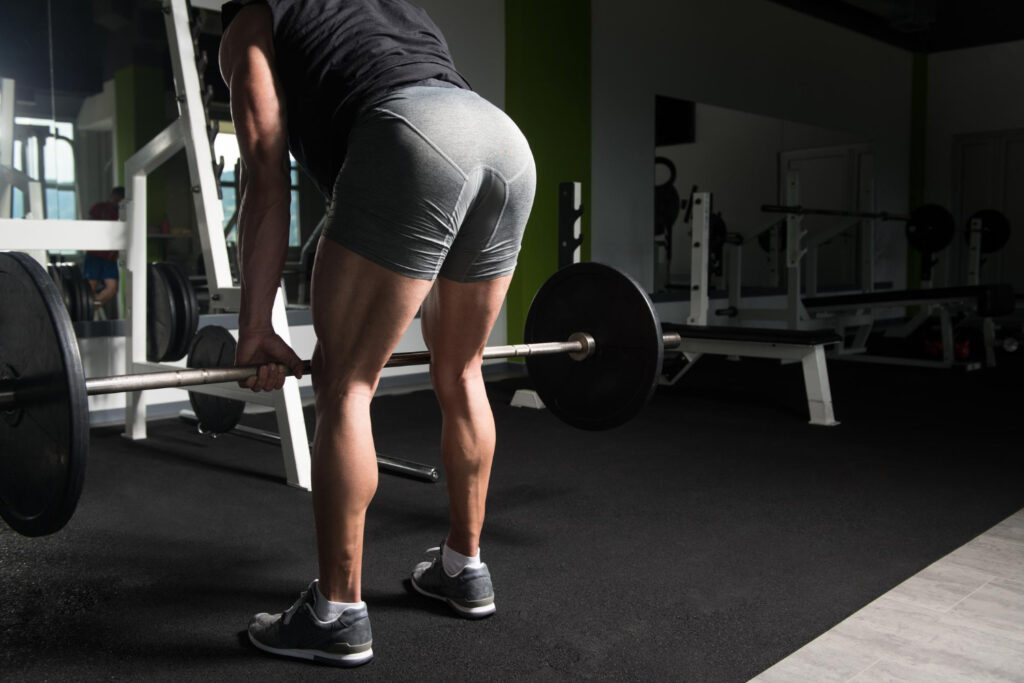
Transitioning from the intricacies of mastering exercises such as the Cable Kneeling Pull Through, it’s crucial to dial in on how many sets and reps are optimal for stimulating muscle growth and strength in your glutes. The right balance can catapult your progress, ensuring every drop of sweat counts. Below is a comprehensive table, tailored specifically for bodybuilders, detailing the recommended sets and reps for each weighted glute exercise.
| Exercise | Sets | Reps |
|---|---|---|
| Barbell Glute Bridge (hands on bar) | 4 | 8-12 |
| Barbell Good Morning | 3 | 10-15 |
| Barbell Hip Thrust | 4 | 8-12 |
| Barbell Seated Good morning | 3 | 10-15 |
| Landmine Romanian Deadlift | 4 | 8-12 |
| Dumbbell Hip Thrust | 4 | 8-12 |
| Dumbbell Hyperextension | 3 | 12-15 |
| Kettlebell Romanian Deadlift | 4 | 8-12 |
| Kettlebell One Legged Deadlift | 3 | 10-12 per leg |
| Cable Kneeling Pull Through | 3 | 12-15 |
This table serves as a guideline. Feel free to adjust based on your experience level, response to the training, and overall fitness goals. Keep the intensity high, and always prioritize form over the number of reps or the weight lifted. With consistency and dedication, these exercises will forge stronger, more resilient glutes.
Tips for a Killer Glute Workout
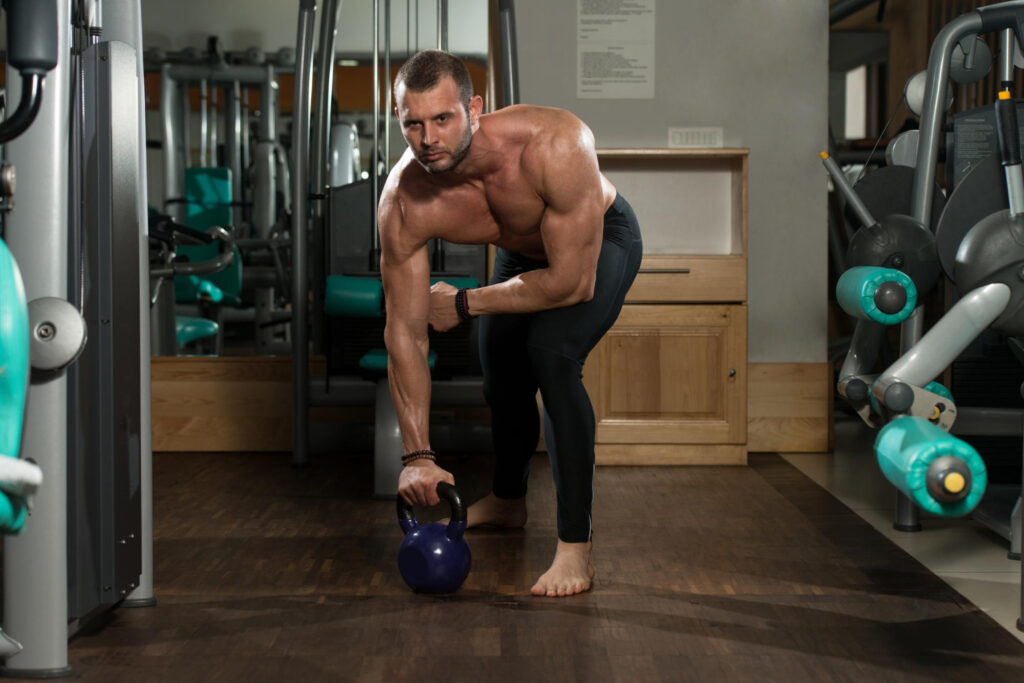
To get the most out of your Glute Exercises Weighted, start with a good warm-up. This gets your muscles ready and helps you avoid injuries. Mixing up your exercises and how heavy they are keeps things interesting and challenges your glutes more.
Keep at it, and you’ll see those gains!
Proper warm-up
Warming up is key. It gets your blood flowing and preps your muscles, including glutes and hamstrings, for the workout ahead. Start with dynamic stretches like leg swings and lunges.
These moves wake up your hips and legs. Then, do a low-intensity version of the exercises you plan to tackle. If barbell squats are on your list, try air squats first.
Doing this helps avoid injury and boosts performance. Think of it as setting the stage for those heavier lifts, ensuring your body is ready to handle them with ease. This step can make a big difference in how well you perform each rep and how fast you see results from all that hard work.
Varying exercises and resistance
After a good warm-up, it’s key to mix up your glute exercises and how hard they are. This keeps your muscles guessing and growing. Try different lifts like the sumo squat and goblet squat.
Each move hits your glutes in unique ways. Adding weights makes it tougher over time.
Also, switch between heavier loads and more reps. This change helps build muscle size, known as hypertrophy, and strength in your backside. Using tools like barbells for deadlifts or ankle weights for leg lifts can also boost resistance.
Keep pushing yourself with new challenges to see real gains in your glutes.
Proper form and technique

Getting your form right is key for making the most of your glute exercises. Keep your spine straight and move smoothly through each exercise. Pay attention to your body’s alignment.
Your knees should not go past your toes during squats, and always engage your core.
Focus on mind-muscle connection. Think about the muscles you’re working on with each lift or push. This helps in targeting the glutes effectively, avoiding strain on unwanted areas like the lower back.
Regularly switch up exercises to hit all parts of the glutes – maximus, minimus, and medius – and remember to breathe properly throughout each movement.
Progressively increasing weight
To get stronger glutes and see real results, adding more weight over time is key. Start with what feels manageable. Then, every few weeks, push a bit harder by increasing the weight you lift.
This keeps your muscles guessing and growing. It’s like telling your body, “Hey, we’re going up a level!” Make sure each lift stays smooth and controlled – no rushing.
As you progress, listen to your body closely. If something feels off or too easy, it might be time to add more weight or switch up the exercise. The goal is to challenge yourself safely without pushing too far too fast.
Think of it as stepping stones; each one gets you closer to where you want to be – with powerful glutes that power through deadlifts, squats, and beyond!
Conclusion
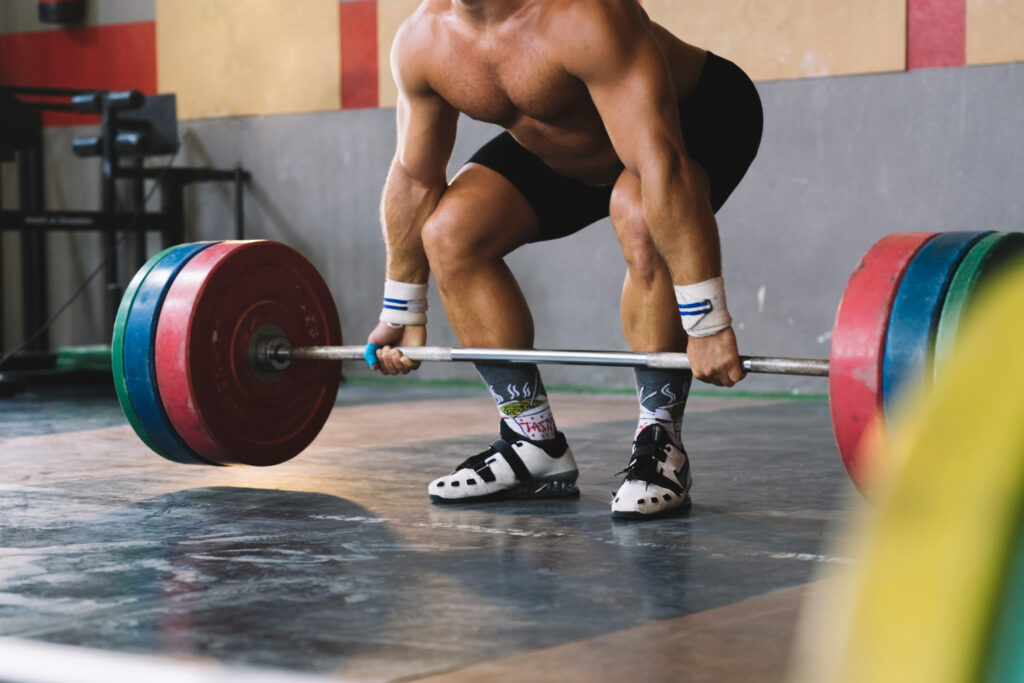
Glute exercises weighted are your go-to for a stronger, toned backside. They make workouts more effective, hitting those muscles hard. Your athletic skills and injury risk benefit too.
Mixing up routines and weights keeps things fresh, challenging your body every time. There’s plenty more to learn out there if you’re hungry for knowledge on this topic. So, keep pushing; a powerful backside awaits!
FAQs
1. What are some good exercises to make my glutes stronger?
To get your glutes strong, try weighted exercises like back squats, bulgarian split squats, and sumo deadlifts. These moves target your butt muscles—gluteus minimus and abductors—and help them grow.
2. How can I tone my butts with weights?
For toning, focus on exercises that work your whole lower body. Goblet squats, conventional deadlifts, and front squats are great for shaping your backsides by working the muscles all around.
3. Do I need special equipment for these glute exercises?
Yes…and no! While a weight room has everything you need—like stability balls and lifting belts—you can also use simpler things at home for resistance. Just be sure to keep pushing yourself!
4. Can doing these exercises improve other parts of my fitness routine?
Absolutely! Strengthening your glutes helps with balance in movements like push-ups and overhead squats because it supports your pelvic bone and sacrum area…which is pretty crucial.
5. What’s a fun exercise to mix up my routine but still work my glutes?
Jump into jump squats or plyometric moves! They add a burst of cardio while focusing on those important butt muscles…plus they’re kind of fun once you get the hang of them.
6. Should I ask a personal trainer about these exercises?
If you’re unsure how to start or want to make sure you’re doing it right—a personal trainer is perfect! They know all about hip bones alignment, proper form in lifting,…and can tailor workouts just for you.

Author
Years ago, the spark of my life’s passion ignited in my mind the moment I stepped into the local gym for the first time. The inaugural bead of perspiration, the initial endeavor, the very first surge of endorphins, and a sense of pride that washed over me post-workout marked the beginning of my deep-seated interest in strength sports, fitness, and sports nutrition. This very curiosity blossomed rapidly into a profound fascination, propelling me to earn a Master’s degree in Physical Education from the Academy of Physical Education in Krakow, followed by a Sports Manager diploma from the Jagiellonian University. My journey of growth led me to gain more specialized qualifications, such as being a certified personal trainer with a focus on sports dietetics, a lifeguard, and an instructor for wellness and corrective gymnastics. Theoretical knowledge paired seamlessly with practical experience, reinforcing my belief that the transformation of individuals under my guidance was also a reflection of my personal growth. This belief holds true even today. Each day, I strive to push the boundaries and explore new realms. These realms gently elevate me to greater heights. The unique combination of passion for my field and the continuous quest for growth fuels my drive to break new ground.





